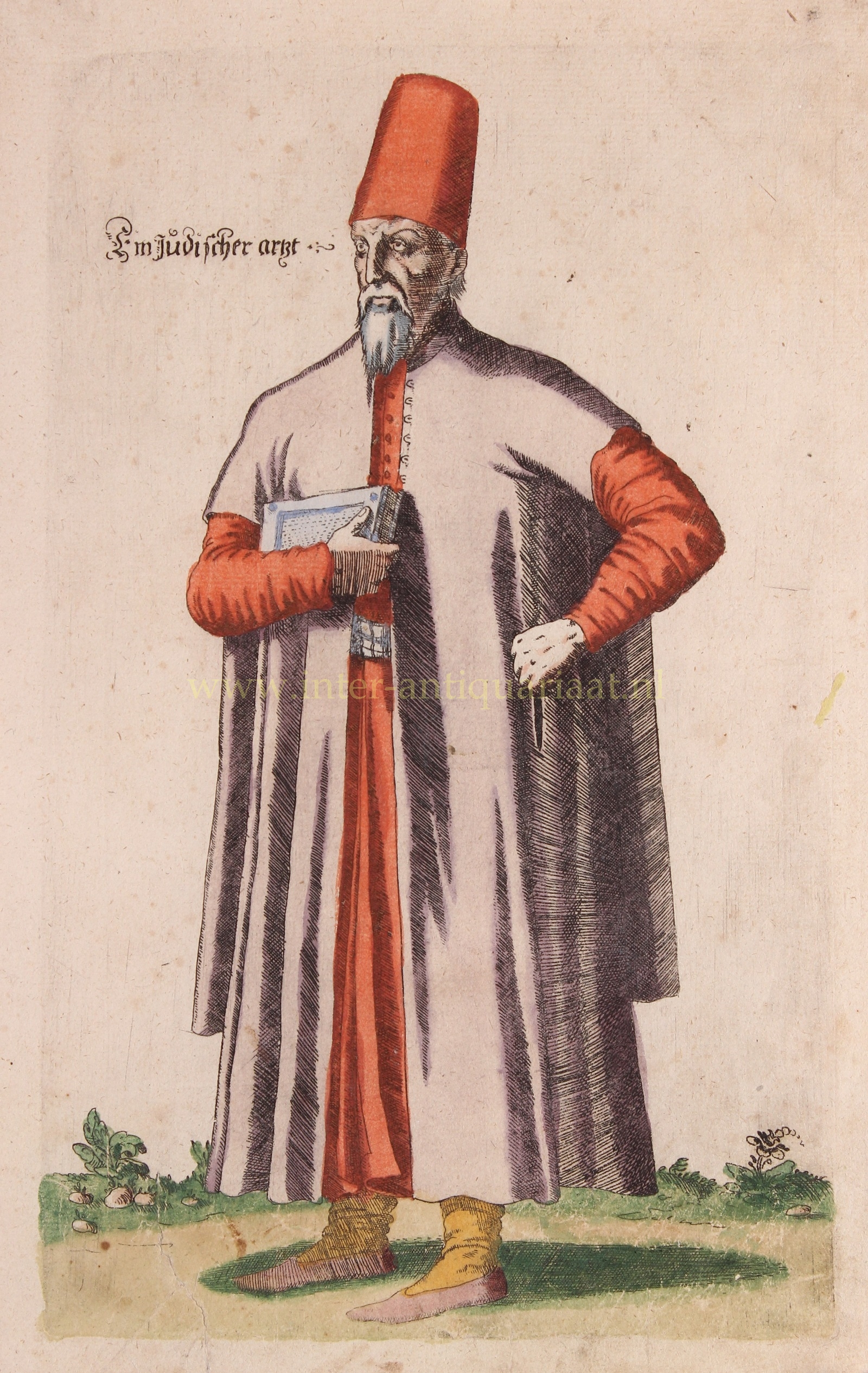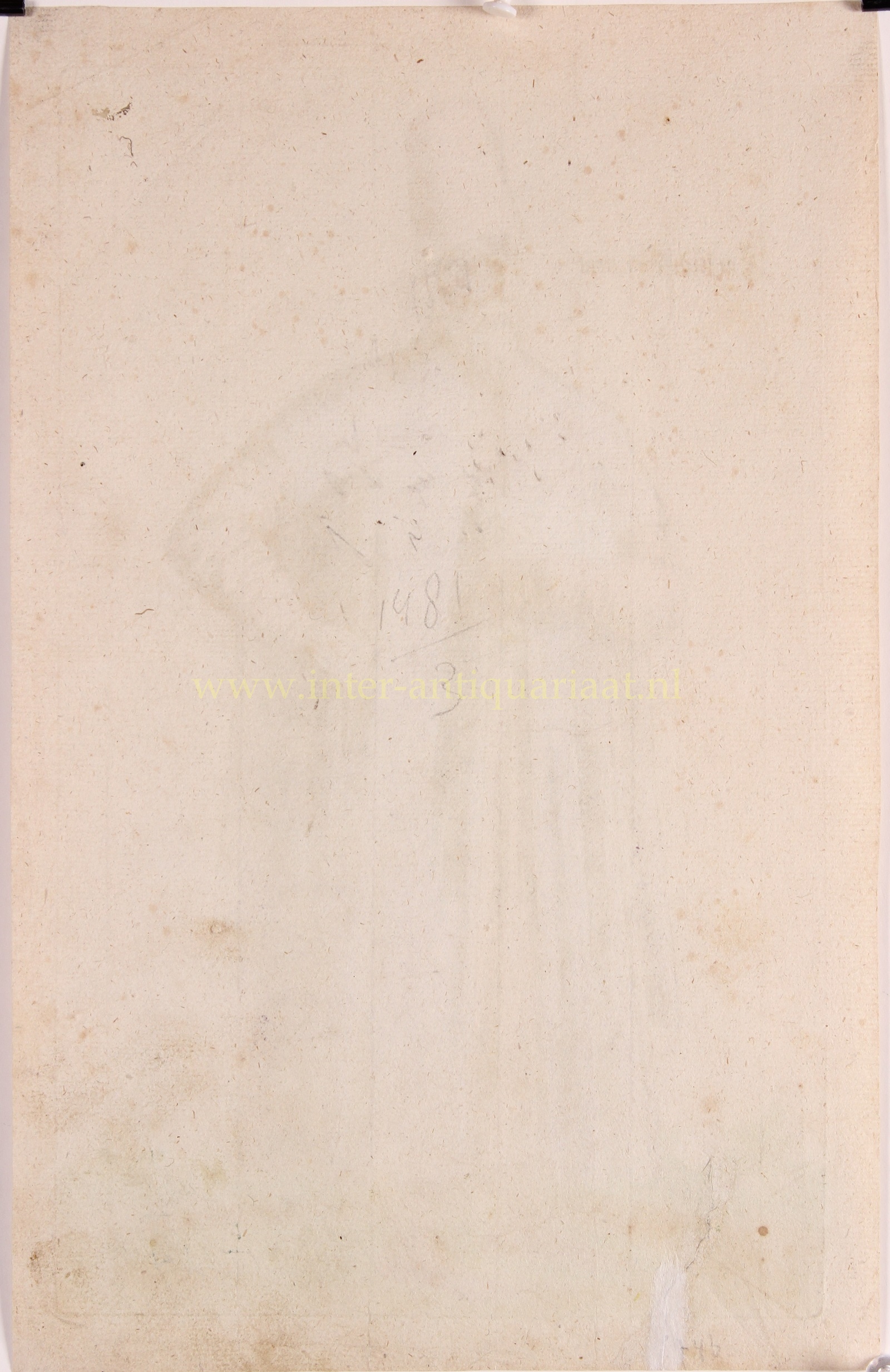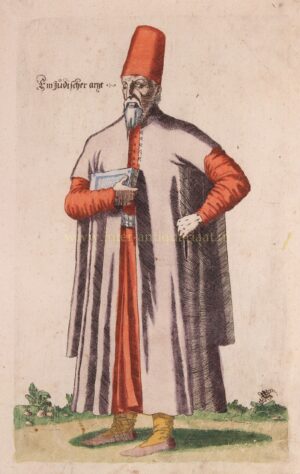THE JEWISH PHYSICIAN
“Ein Jüdischer Artzt” anonymous 17th century engraving (after an etching of 1568 by Pieter van der Borcht I) of Asaph the Jew (also known as Asaph ben Berechiah, Assaf Harofeh, Assaf Hayudi or “the Jewish Hippocrates”). With original hand colouring. Size: 27 x 17 cm.
Medicine in the 16th century, whether among Jews or non-Jews, was still in a relatively primitive state compared to modern standards, and there was limited understanding of diseases and treatments. Many practices that were common at the time are now considered ineffective or even harmful.
Jewish medical practices were often guided by halachic (Jewish legal) principles. The dietary laws of kashrut influenced what foods were considered appropriate for healing and convalescence. Some aspects of medical treatment, such as the use of certain animal-based remedies, were regulated by Jewish dietary laws.
Herbal medicine was a prominent feature. Physicians and herbalists would use a variety of plants and herbs to concoct remedies for various ailments. These herbal remedies were often based on empirical knowledge passed down through generations.
Jewish communities often had their own medical practitioners, including physicians and apothecaries. These medical professionals provided care to members of the community and followed both Jewish and non-Jewish medical practices of the time. They would treat common ailments, injuries, and provide advice on diet and hygiene.
“Sefer Asaph” (ספר אסף or “The Book of Asaph”), the earliest-known medical book written in Hebrew, is attributed to Asaph the Jew depicted here. It discusses illnesses, treatments and prevention. The book also prescribes different remedies for each month of the year, based on the believed effects that astrology had upon the body’s humors. The work notably includes the Oath of Asaph, a code of conduct for Jewish physicians, strongly resembling the Hippocratic Oath. It was taken by medical students at their graduation
Price: Euro 450,-





